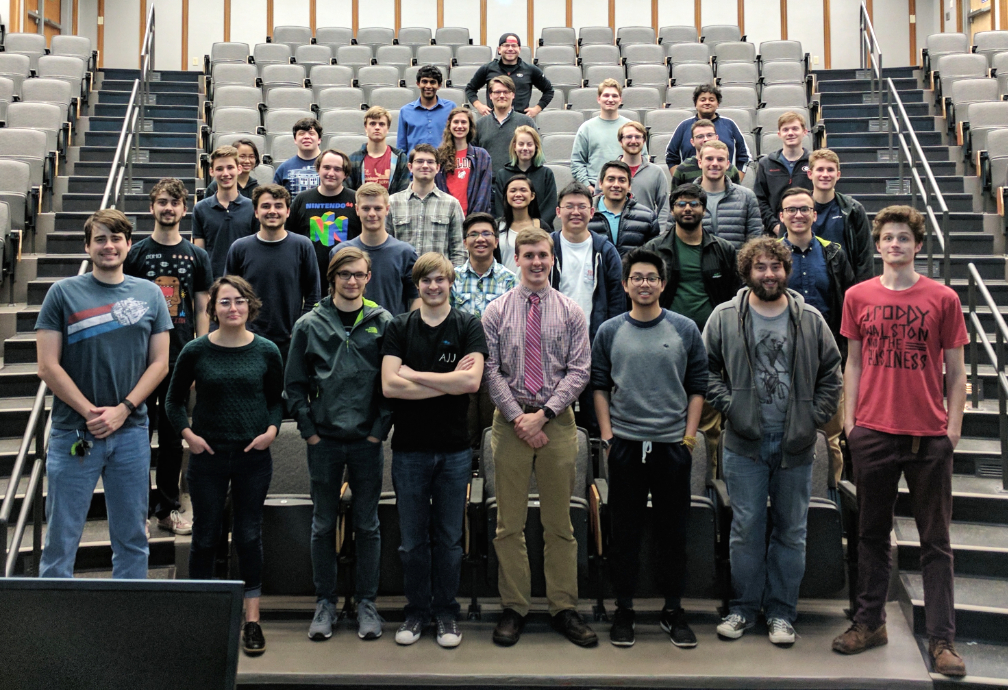
at the University of Georgia.
The University of Georgia‘s Small Satellite Research Laboratory (SSRL), located in the basement of the Physics building, is developing two satellites that will be sent into orbit to map and image oceanic and coastal ecosystems.
SSRL was created, thanks to funding from two grants for the design, integration, and testing of cubesats. These smallsats are comprised of units(U), each one under 1.33 kg and measuring 10x10x11 cm in size. Both projects, one funded by the Air Force Research Laboratory’s (AFRL) University Nanosatellite Program (UNP), and the other funded by NASA’s Undergraduate Student Instrument Project (USIP), are for building two, 3U cubesats.
The projects are supervised by Dr. David L. Cotten with physics faculty members Dr. Susanne Ullrich and Dr. William Dennis, along with 12 other faculty across five departments at UGA, creating a truly interdisciplinary group. As a result of these funding opportunities, SSRL established an official Space Act Agreement with the NASA Ames Research Center for testing of satellite components and sharing of information.
The primary scientific goals of these cubesat missions are to develop and operate the first moderate resolution coastal ecosystem and ocean color CubeSats in Georgia.
The AFRL mission, the Mapping and Ocean Color Imager (MOCI) will use an onboard RGB camera to take images from multiple perspectives to create a 3D point cloud of land features.
The NASA mission, the SPectral and Ocean Color Satellite (SPOC Sat), will generate hyperspectral moderate resolution imaging products to monitor coastal wetlands status, estuarine water quality, and near-coastal ocean productivity in compliance with some of the NASA’s strategic objectives. The designing and building of the hyperspectral imager for SPOC is being done in house and will have 60 bands to acquire image data between 400 and 850 nm. In addition, the SPOC mission has been chosen as a candidate of NASA’s eight CubeSat Launch Initiative, meaning that SPOC will be launched to the International Space Station for deployment between 2018 and 2020.
Both 3U cubesats will contain all relevant flight systems such as: S-band and UHF/VHF communications, Electrical Power Systems, an On Board Computer (OBC), Attitude Determination and Control Systems (ADCS) with reaction wheels and sun sensors, and data storage. The two missions and the establishment of the lab have the primary goals of teaching and developing students for STEM careers by training undergraduates in a broad range of fields through hands-on, experiential learning and creating a pipeline for high school students to attend UGA through the Physics and Astronomy Department. While the majority of members in the lab are undergraduates, there are graduate students that serve as mentors. The team currently consists of 45 students from around campus.

The student groups have already been through multiple reviews with the Air Force and NASA regarding communications, engineering, orbital parameters, power specifications, data management, temperature regulation, attitude control, project management, and budgeting. The team is divided into 5 subteams: Mechanical, Electrical, Mission Operations, Research, Testing, and Lab Operations in order to address the many aspects of the missions.
The undergraduate students have also been very active in outreach activities: giving a three day workshop in SSRL with NSF-funded LISEL-B teachers to help communicate science to middle and high school students, serving as guest lecturers at Cedar Shoals High School presenting on orbital mechanics, giving four guest lectures around campus, and will be giving a series of workshops related to empowering women in STEM with Chick Tech Atlanta.
These and future projects in the lab will provide a unique opportunity to enhance the growth of UGA educational programs by exposing undergraduates to the challenges of space exploration, creating more experiential learning opportunities for classes, helping students transition into the STEM related workforce, and attracting new students to the University. More information about these projects can be found at this direct infolink…
The lab is currently equipped with a 140 sq ft clean room rated ISO 7, a 200-liter vacuum chamber capable of reaching 10-6 torr and multiple Electrostatic Discharge workstations, all of which are suitable for the integrations and testing of flight ready equipment. The lab is leading the way in developing a Small Satellite Course that will form the foundation of an aerospace-based curriculum at UGA. This program will have all levels of students from undergraduate to doctoral, with faculty based in numerous departments.
SSRL aims to teach, to develop, and to discover through undergraduate involvement. For years to come, the lab hopes to continue: teaching students how to build and use space ready equipment, developing the local community by getting local K-12 students interested in both space exploration and the University, and discovering, by using space based equipment to observe phenomenon on Earth from an orbital perspective through national funding opportunities, creating new technologies that can be used on future missions, and demonstrating how small satellite systems can make large scientific discoveries.
Article source: Department of Physics and Astronomy,
Franklin College of Arts and Sciences,
University of Georgia.
